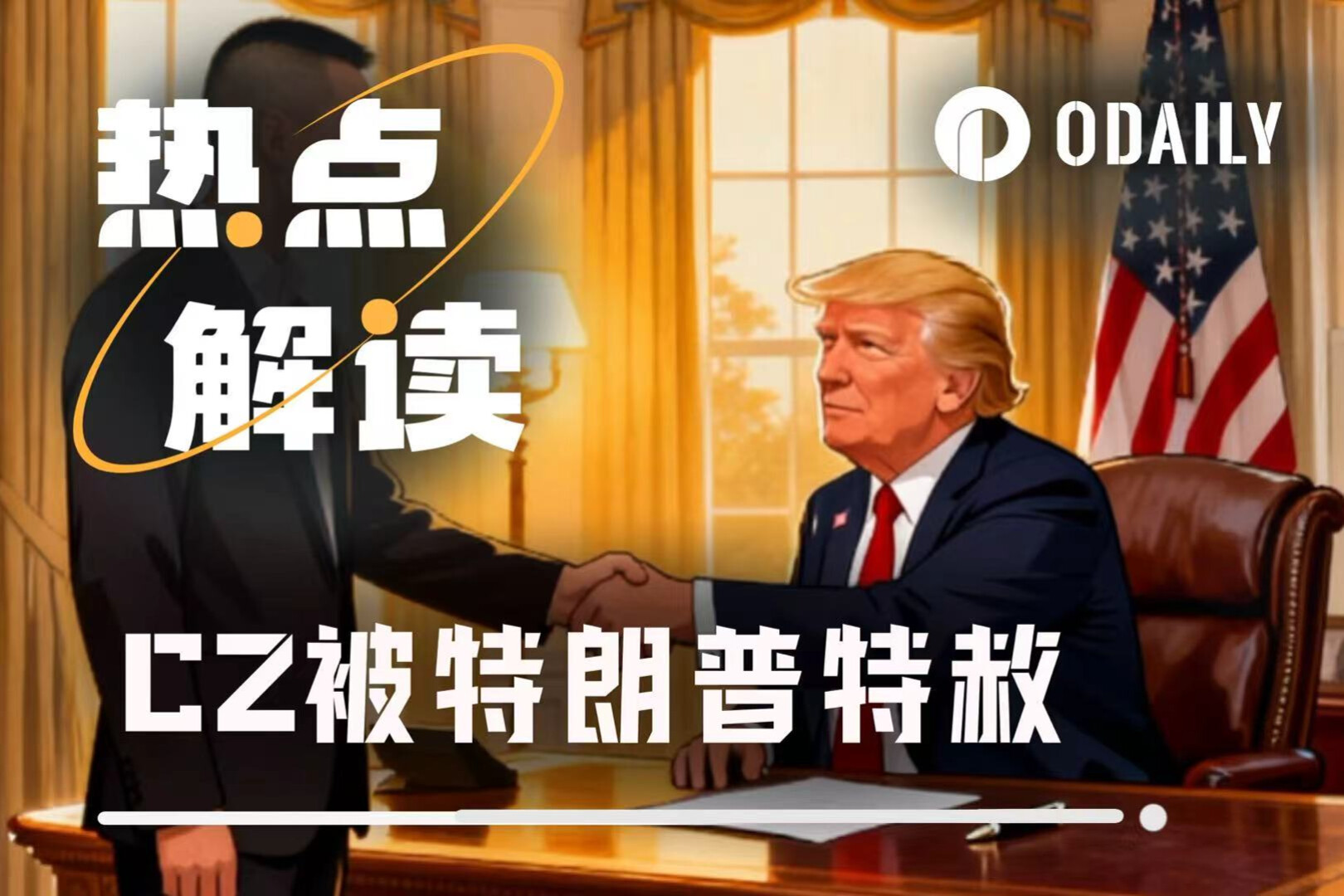Recently, AlphaArena, an "AI Cryptocurrency Trading Arena" launched by the startup NOF1, has ignited the crypto and fintech community. The competition provides each AI model with $10,000 in real funds, allowing them to trade autonomously in the crypto market. Suddenly, the "financial intelligence" of AI has become a hot topic.
Amid this surge of interest, a more practical question has emerged: can ordinary users leverage AI to enhance already mature fixed trading strategies? To explore the answer, OKX and AiCoin jointly launched a unique experiment : using the same six AI models—GPT-5, Claude Sonnet 4.5, Gemini 2.5 Pro, DeepSeek V3.1, Qwen3 Max, and Grok-4 (for ease of reading, the abbreviations for each AI will be used below)—to provide parameters for OKX's BTC contract grid strategy. Through rigorous data backtesting under unified market conditions, the true capabilities of these AI "traders" were examined.
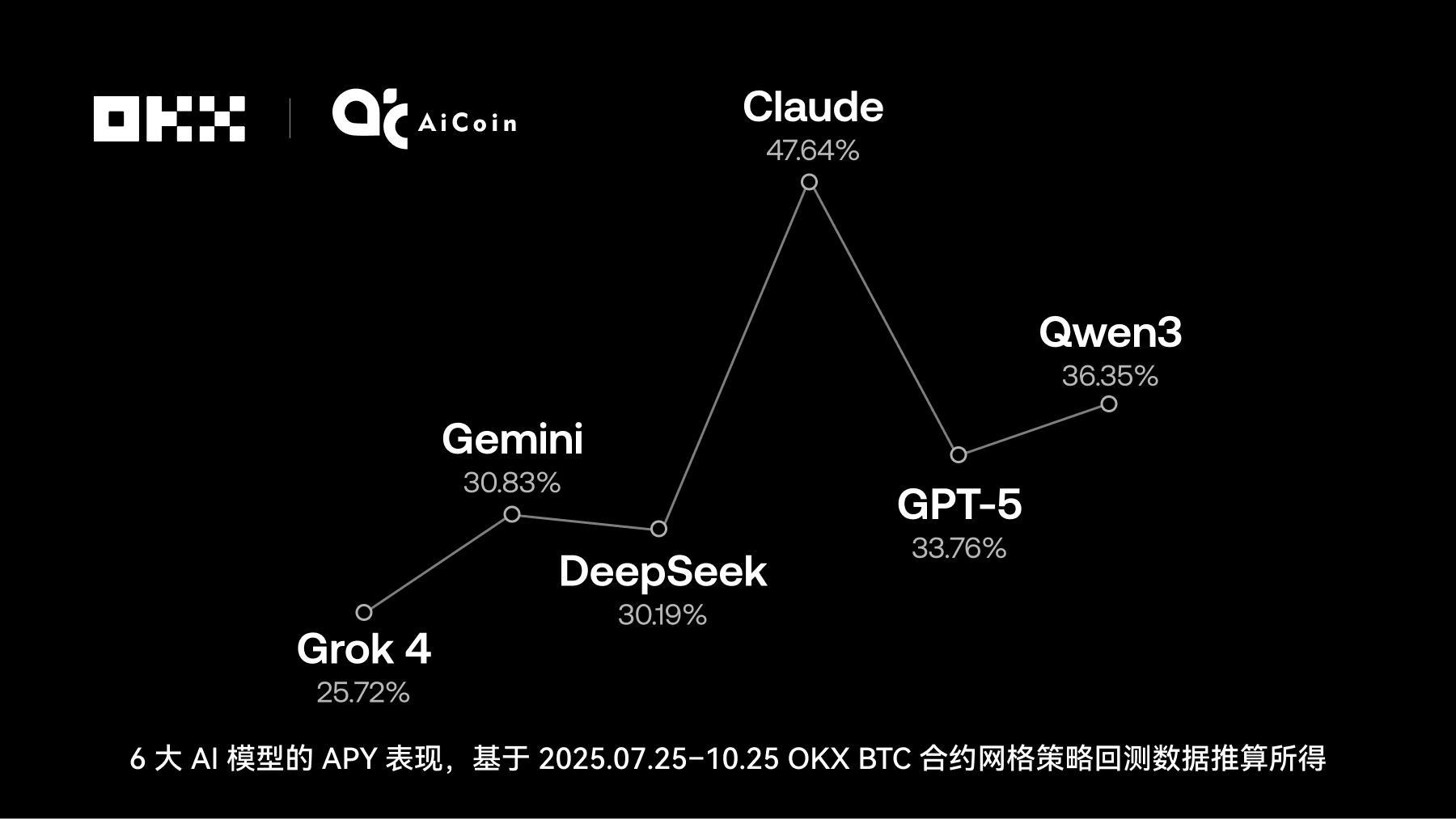
Without considering transaction fees, in addition to the strategy's inherent returns, if the additional returns from OKX's "Auto Earn" feature are added (the returns are adjusted in real time according to the market, previously reaching a maximum of around 50%, currently at 3%), then Claude's highest APY for the OKX BTC contract grid strategy can reach 50.64%.
Users only need to upgrade the OKX App to version V 6.141.0 or above to automatically enjoy the extra income brought by "Automatic Earning Coins". The funds will remain in the strategy account and can be used as margin without increasing the risk.
Method Description
This evaluation requires each AI to provide the parameters of an AI grid based on a 1-hour perpetual BTC/USDT chart on OKX, including the price range, number of grids, direction (long, short, neutral), and pattern (arithmetic, geometric). Simultaneously, a uniform capital limit of 100,000 USDT must be followed, and all investments must utilize 5x leverage.
After all parameters are submitted, they will be verified in a unified backtesting environment: the target is a grid strategy using the BTC/USDT perpetual contract on OKX, with a candlestick period of 15 minutes (or with some margin of error), and the backtesting period is uniformly set to historical market data from July 25th to October 25th, 2025. Then, the batch backtesting function of the AiCoin platform will be used for simulation verification. This tool will automatically simulate the order placement and execution process based on the input grid parameters and output detailed trading data and profit statistics. The backtesting results will focus on key indicators such as total profit, return rate, win rate, maximum drawdown, and Sharpe ratio to ensure a fair and transparent comparison of each AI strategy under identical market conditions.
Strategy Parameter Analysis: Differences in AI's "Personality"
By comparing the key grid parameters of the six major AI models, we can discover the core differences in their strategy design:
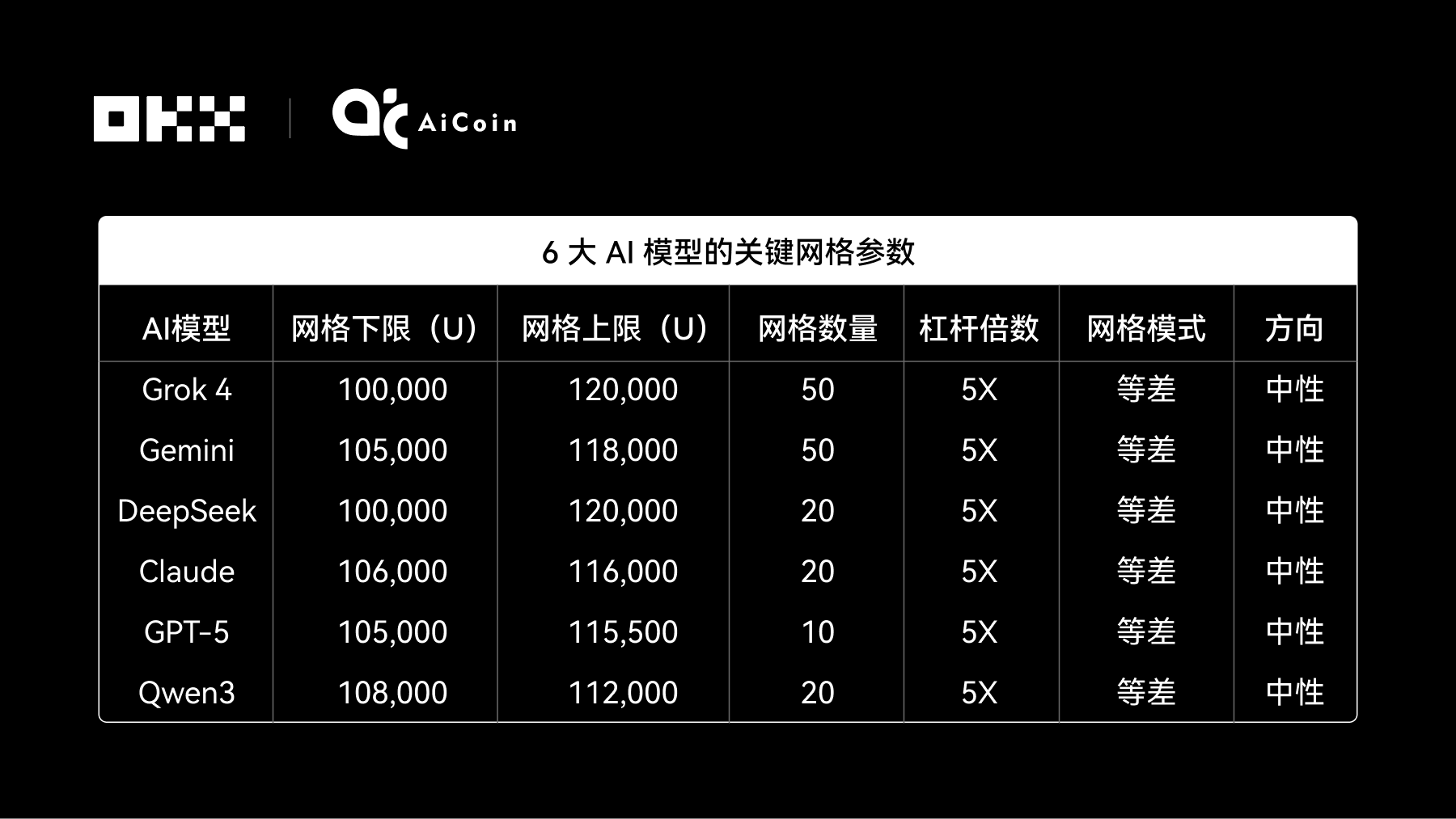
As shown in the table above, all AIs chose an arithmetic progression grid pattern, rather than a proportional one; and a neutral grid strategy, which involves simultaneous buy and sell arbitrage without needing to predict unilateral trends. In addition, there are significant differences in the price ranges and grid densities provided by the various AIs.
1) The extreme high-frequency, small-amount approach, represented by Grok-4 and Gemini, tends to accumulate small profits through high-density, high-frequency trading.
All of these strategies employ the highest grid size of 50 units and the smallest unit capital. Gemini's unit price interval is the most sensitive to price fluctuations among all strategies, aiming for the ultimate ultra-high frequency arbitrage; while Grok-4 combines the widest 20,000 USDT range, aiming to place dense orders over a wider area. Due to the small unit capital, these strategies offer relatively high capital security, but require the market to maintain continuous high-frequency fluctuations.
2) The moderate approach includes DeepSeek and Claude, which use medium-density grids and single-cell base values.
Claude's 10,000 USDT range and parameter configuration are moderate, making it a robust and balanced approach. DeepSeek, on the other hand, opted for the widest 20,000 USDT range, tending to trade at a moderate frequency to obtain more substantial single-trade returns under the expectation of high volatility.
3) The GPT-5, which focuses on large-scale low-frequency transactions, adopts an extreme "focus on the big and neglect the small" strategy.
It sets a minimum of 10 grid cells and a maximum capital requirement per cell, with the largest price interval per cell, meaning it has the lowest trading frequency but the most substantial profit per arbitrage trade. This strategy forgoes profits from small fluctuations, focusing instead on capturing large-scale trends, thus potentially resulting in a higher win rate. However, due to the large capital required per cell, its risk of margin call (drawdown) is the highest among all strategies once the price breaks out of the range.
4) The narrow-range, high-density Qwen3 seeks efficient arbitrage within a limited range.
It employs the narrowest price range of 4,000 U among all models, combined with a moderate 20-grid layout, resulting in relatively small price intervals per grid cell. This is an extremely concentrated strategy, focusing on high-density arbitrage within a specific narrow range. It demands extremely high prediction accuracy, and the strategy will quickly fail once prices move out of the preset range.
Overall performance: Claude is far ahead, while GPT-5 is a steady winner.
Although AI is free from emotional interference, the final data shows that the performance of AI "traders" still heavily relies on their data training and model design. Through a comprehensive comparison of returns, risk control, and win rates, the strategies of various AI models showed significant divergence under the same capital and leverage conditions, revealing the trade-offs of different AIs in the real market (Note: Backtesting does not represent future returns; while AI can select favorable market conditions, its actual performance remains uncertain).
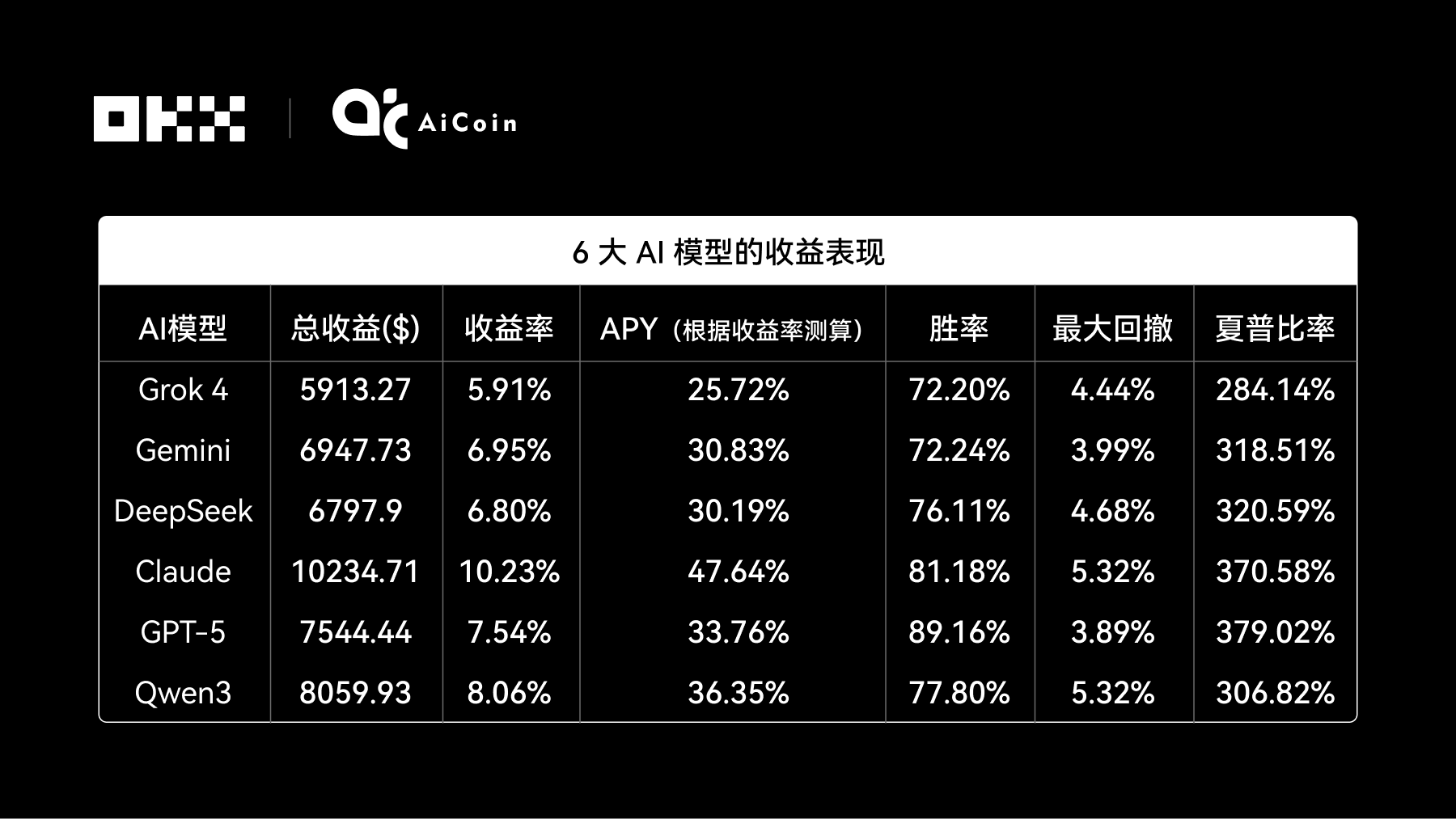
After comprehensively evaluating each model, who is the real "smart trader"?
1) Top Earnings and Adventurers: Claude
Total Return Top Spot: Claude leads by a wide margin with the highest return of 10.23% , demonstrating that its combination of a robust range and a medium grid successfully captured the main fluctuation range of the market, making the strategy the most effective.
Risk and Reward: It boasts a Sharpe ratio of 370.58% , second only to GPT-5, demonstrating excellent risk-adjusted returns. However, its maximum drawdown of 5.32% suggests that its high returns are built on the assumption of greater unrealized losses and volatility, indicating that the strategy exhibits strong market adaptability and a certain degree of risk-taking.
2) Risk Control Master and Efficiency Paradigm: GPT-5
Superior Risk Control: GPT-5 perfectly embodies the strategic essence of "don't try to earn every penny in the market." Its low-density grid strategy filters out a large amount of market noise, resulting in a maximum drawdown of only 3.89%.
High Profitability: With a top win rate of 89.16% and a Sharpe ratio of 379.02%, it demonstrates the robustness and efficiency of its high-volume, low-frequency strategy. GPT-5 is a prime example of risk-adjusted returns, showcasing the advantages of reducing the number of trades and focusing on capturing opportunities with higher volatility.
3) Strategy Differentiation and the Dilemma of High-Frequency Trading
Focused arbitrageurs: Qwen3 ranked third with a respectable return of 8.06%. However, its extremely narrow range strategy of 4,000 USDT relies heavily on high-density price fluctuations within that range. Its maximum drawdown of 5.32% is tied with Claude, confirming its high concentration of risk—the strategy faces rapid failure once the market breaks out of the narrow range.
High frequency, low efficiency: Although Grok-4 and Gemini employ similar 50-grid high-density strategies, their returns are relatively poor (Grok-4 has the lowest return at 5.91%). Their lowest win rate (approximately 72%) and low Sharpe ratio (Grok-4 has the lowest at 284.14%) indicate that excessively frequent small trades may erode profits due to transaction costs such as fees and slippage, failing to demonstrate the advantages of high-frequency trading.
Solid but not outstanding: Gemini-2.5-Pro has the second lowest maximum drawdown (3.99%), showing solid performance, but its returns are average, positioning it as a moderate practitioner; DeepSeek-Chat has solid win rate and drawdown performance (76.11% win rate, 4.68% drawdown), falling between high-frequency and low-frequency strategies.
Key findings: The market validated that low-frequency high-profit (GPT-5) and range-precise capture (Claude) strategies outperformed extremely high-frequency low-profit (Grok-4/Gemini) strategies. GPT-5 won with superior risk control and the highest Sharpe ratio, while Claude took the lead with its absolute return advantage. The two represent two successful endpoints of risk control and aggressive returns.
Implications and risk warnings for strategy users
This AI grid trading competition was not only a technical demonstration but also a vivid "tutorial" on trading strategies. There are no universal strategies, only those adapted to market conditions . The core takeaway from the strategy differentiation results of this evaluation is that the success of a strategy depends on its fit with the current market conditions: the success of GPT-5 clearly tells users that an excellent strategy should not only be profitable but also able to control drawdowns. When setting up grids, users must prioritize high win rate and high Sharpe ratio over simply high returns and set reasonable stop-loss orders based on their own risk tolerance.
Furthermore, the combination of grid number and price range defines the "personality" of the strategy, which users should choose based on the market stage they are judging.
- Low-frequency high-profit vs. high-frequency low-profit: GPT-5's low-density strategy has proven to be more efficient at filtering market noise and capturing large price swings under specific market conditions. While Grok-4/Gemini's high-density strategy trades frequently, it failed to achieve maximum returns due to transaction costs and other factors, suggesting that high-frequency low-profit strategies are more demanding in terms of market conditions.
- Precise arbitrage: Claude's high returns and Qwen3's narrow-range strategy both demonstrate the importance of accurately judging market ranges.
Users can combine the results of this evaluation with the functions of the OKX platform to make rational parameter adjustments.
- Beginners or conservative users can refer to GPT-5's low-density, high-capital-per-session strategy to pursue stability and reduce trading frequency and psychological pressure.
- Experienced users or those seeking higher returns can refer to Claude's approach. After accurately assessing market conditions, they can use a medium-density grid to amplify profits, but they should be prepared to withstand significant fluctuations.
- Utilizing AI tools to assist decision-making and parameter tuning: The parameter combinations provided by the AI model are based on backtesting and optimization of historical market data. Users can refer to the parameter design ideas provided by the AI strategy function of the OKX platform's strategy trading, but ultimately need to make dynamic adjustments based on their own judgment of the currency's trend and volatility. For example, when facing a one-sided market, the range can be narrowed or the grid can be reduced, while the range can be increased to capture large market movements.
- Do not invest all your funds in a single strategy. Instead, diversify your assets and targets: use OKX’s “take profit/stop loss” function or periodically close positions to lock in profits, and set stop loss orders outside the grid range to deal with losses in case of a sharp trend reversal.
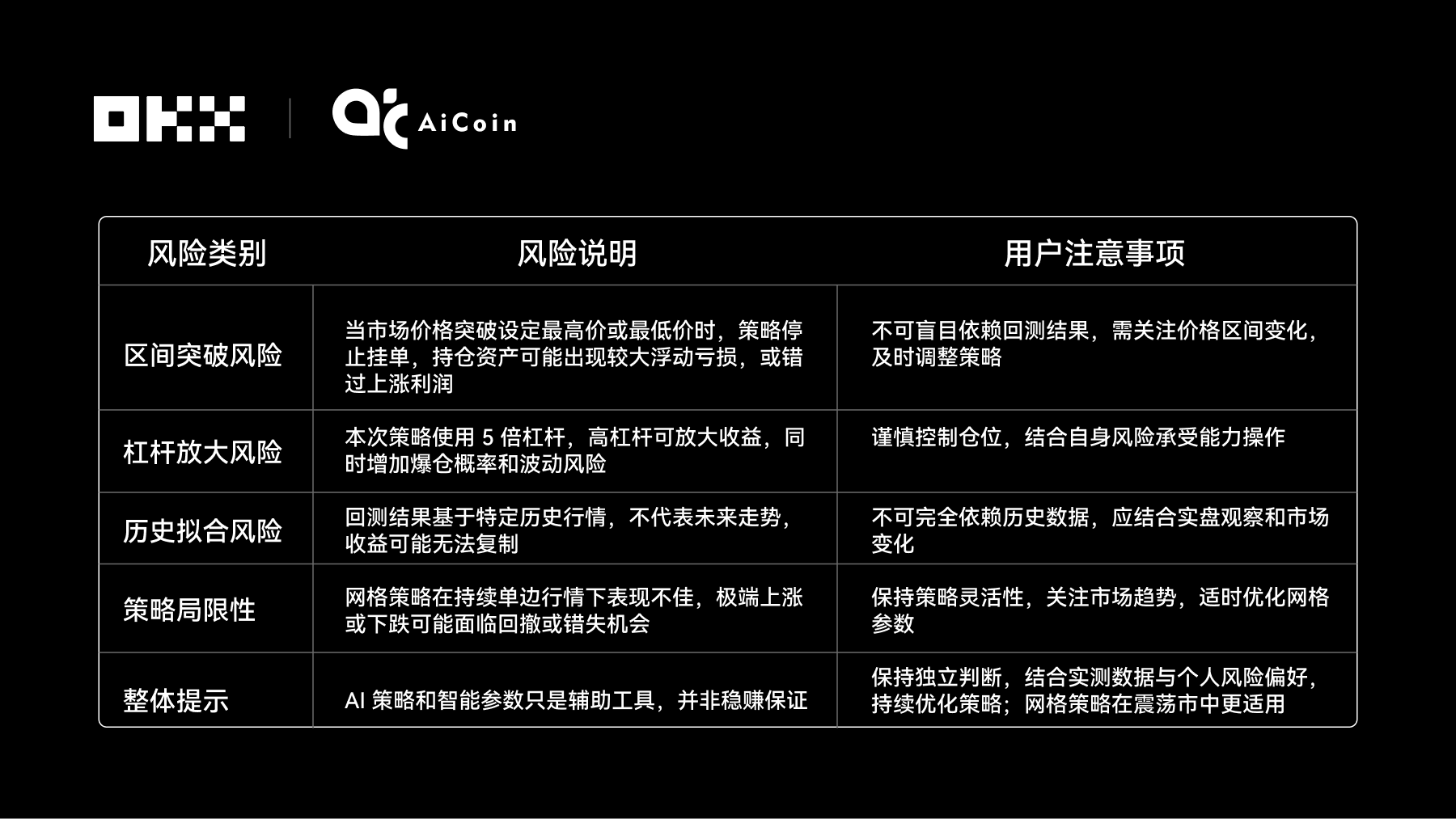
Finally, a heads-up: In addition to backtesting data, we are still collecting data on the live performance of the six AI models on the OKX BTC contract grid strategy. Stay tuned for more updates from OKX and AiCoin!
Disclaimer:
This article is for informational purposes only. The views expressed are solely those of the author and do not represent the position of OKX. This article is not intended to provide (i) investment advice or recommendations; (ii) an offer or solicitation to buy, sell, or hold digital assets; or (iii) financial, accounting, legal, or tax advice. We do not guarantee the accuracy, completeness, or usefulness of such information. Holding digital assets (including stablecoins and NFTs) involves high risk and may result in significant volatility. You should carefully consider whether trading or holding digital assets is suitable for you based on your financial situation. For your specific circumstances, please consult your legal/tax/investment professional. You are solely responsible for understanding and complying with applicable local laws and regulations.
- 核心观点:AI交易策略表现分化,Claude收益最高。
- 关键要素:
- Claude收益率10.23%,策略最激进。
- GPT-5夏普比率379%,风控最佳。
- 高频策略收益垫底,受成本拖累。
- 市场影响:验证AI辅助交易可行性,推动策略优化。
- 时效性标注:中期影响



